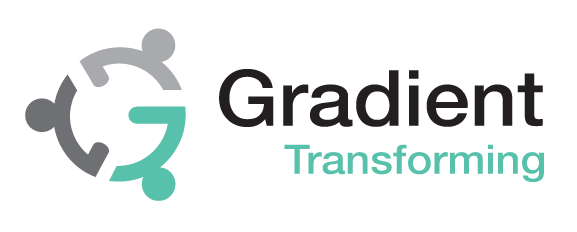2024 was a challenging year for business, and we had hoped that 2025 would see things change a little.
If you read our last blog, you’ll see that we still believe that Digital Transformation can help a business move forward, even in tough times, so in this blog we’d like to delve into that further.
We’re going to look at the main challenges that a business could face this year. They are the general business environment, financial environment and finally how this impacts your people.
Business Environment
Right now, business growth in the UK feels like a tricky thing to predict. Over the last few years, we’ve had our fair share of challenges! We’re not ones to get political, and we won’t in this blog either. But we cannot deny that there have been some bumps along the road.
We regularly read reports from people such as the GM Chamber of Commerce (of which we are a member) and also get updates from groups such as The Manufacturer and the Aerospace alliances. All are reporting that the general business environment is tough.
In 2022 the word ‘Permacrisis’ was the Collins English Dictionary word of the year. This pretty much sums up what has been happening globally, not just in the UK.
With Covid, chips shortages, and then real supply chain uncertainties, there has been a list of things which has taken its toll on industry as a whole, and geo-political events have also had their impact. This means, that it is getting harder for businesses to make a profit while keeping the status quo that they have had before.
In order to keep up with the times, more businesses are realising that they have to do things differently. Carrying on as you always have, when pressures on businesses are coming from all angles, isn’t the best plan of action. But even though companies are seeing that they need to change, that change can feel intimidating.
If you look back at our September blog, we shared with you the basics of what digital transformation is and whilst we agree it can feel like a high mountain to climb, it can also be something that can actually help stabilise your business.
For example, one of the things which contributed to the current feeling of Permacrisis was the costs and shortages of raw materials. For any business, that can be a concern. Not just those that are consuming the raw materials – it also adds uncertainty for others further up into the supply chain too.
However, what if you could do something within that supply chain to ensure that you were always getting a good price and an appropriate supply of the materials? Even at the bottom end of the supply chain, achieving this can create stability and confidence further up the chain.
This is where digital transformation can come in, systems such as ERP systems can help you manage your stock needs, whilst BI can give you greater intelligence about what you need going forward to meet demand. Integrating new AI capabilities can bring a level of forward looking ability to spot challenges before they arise, and there is still time for mitigation.
These two suggestions, whilst relatively simple in terms of digital transformation, can make a huge difference, and they’re something that we’d encourage businesses to look into – especially given the current business conditions.
In short, they’ll give you the competitive edge that the bigger players are looking for.
Financial
There are many differing views when it comes to the economy, and we’re not about to go down that rabbit hole! However, the biggest impact that we’ve seen recently is the changes to the NI contribution.
The contribution has gone up by 1.2% and for someone earning the minimum wage, this change would see their NI rise from £1,617 to £2,583 per year. For many businesses this is significant.
For businesses there is now the very real consideration of having to reduce headcount, or at least put a freeze on recruitment, as for many, staffing costs are the highest cost in the business.
But what does that mean for the types of businesses that we work with? Essentially they’re going to have to do more with less, which is the sentence that no one wants to hear (or maybe is fed up with hearing)!
If we take the example from above, a business that is in a supply chain that is already being squeezed; in order to keep their place in it, they’re going to have to work harder to maintain that place with less resources available. Their decision will need to be around whether they keep their current headcount, with the expense that it entails, or can they reduce costs in another way, whilst still delivering on time and in full to ensure they keep the orders coming in.
If we go back to considering the trends for 2025 from our last blog, then there are two things that jump out. The use of smart manufacturing solutions and Artificial Intelligence.
Smart manufacturing solutions, whilst requiring a significant investment can help save money in the longer term. For example, the use of smart machines (which essentially are connected to the internet) can give valuable data about your manufacturing processes. They record a raft of information, giving accurate timings for processes and downtime. This when coupled with AI could show where a company could start to cut costs. Not by compromising on the quality of components or staff headcount, but by increasing the productivity of the factory as a whole
Impact on people
The third element in all this is people, and it’s the one that we believe is at the core of any digital transformation or change management journey.
It seems obvious to say that financial and business challenges around the globe will affect staff, but in some cases the most obvious things are the ones that we can’t ignore. Senior leadership teams sometimes assume that people will be ok and will understand with the minimum of communication with them.
In the example of our manufacturing company, conversations at board level about cost-cutting could filter down to the workforce. These conversations may well start based in fact, but after a while can become different to the original message, and consequently affect performance and drive in the engine room of the organisation.
This is why a big part of change management is communication. It may well be that it’s not appropriate to share all the ins and outs of a company strategy with your employees, but sharing something that enables them to see your vision, whatever that may be, is vital.
For our scenario, looking at new software, or automation, then it would be essential to explain the thought behind this and what benefits it will bring. In many cases, automation is not about reducing headcount, it can be about making better use of the people that you already have. Freeing them up to do more, rather than them being bogged down in the mundane.
We hope that this blog has given you some food for thought. There is a lot that could be said about the current environment, and the challenges that it brings. However, we firmly believe that these challenges often give us the chance to grow. If you look at digital transformation and change as a positive, then there are often significant gains to be had.
There is also an oft-overlooked consideration in introducing change of all types – the mechanics of project management. We’ll be talking about it more in future blogs, but we know that key to achieving ROI of any investment is ensuring its introduction is effective, and that means considering change and project management. Watch this space for our input into those two essential aspects of digital transformation.
If you’d like to talk more about how you want to move forward through the challenges you face, then please get in touch.

